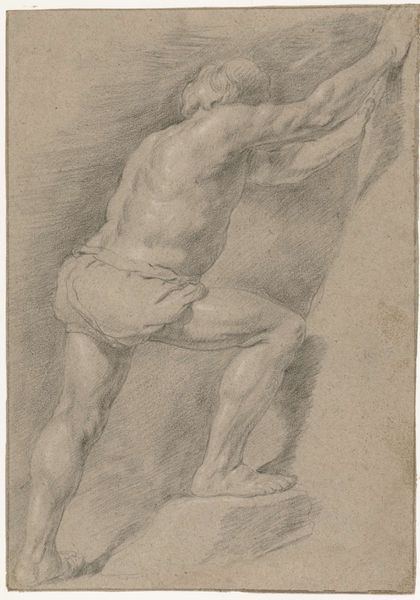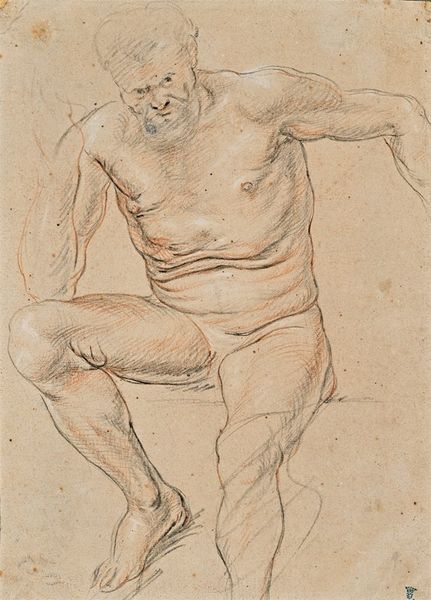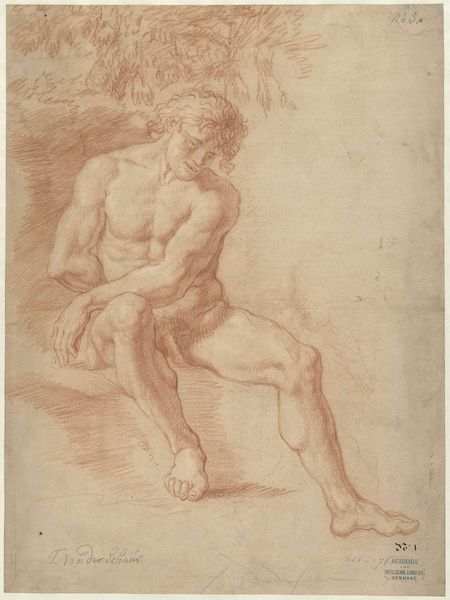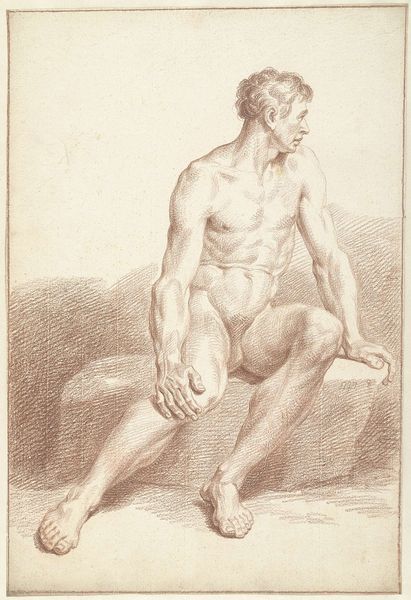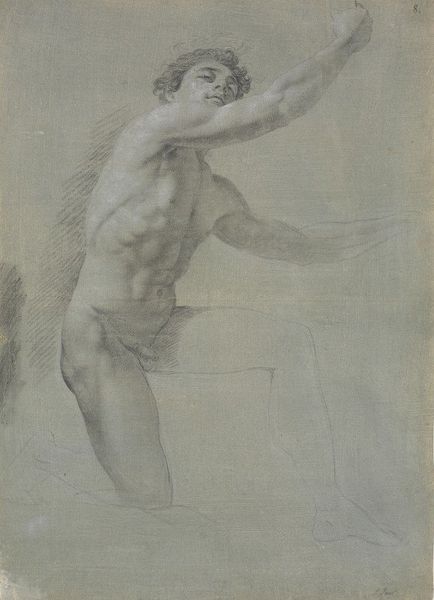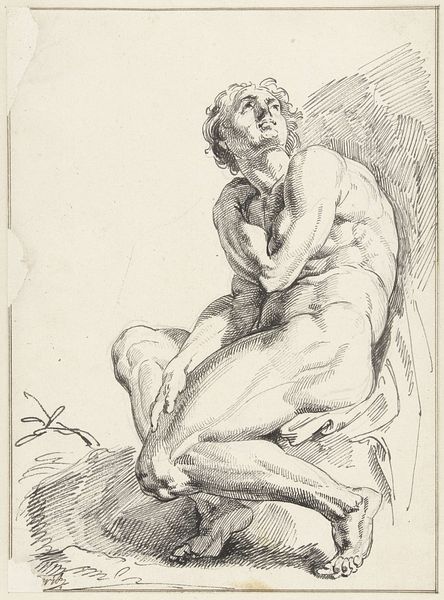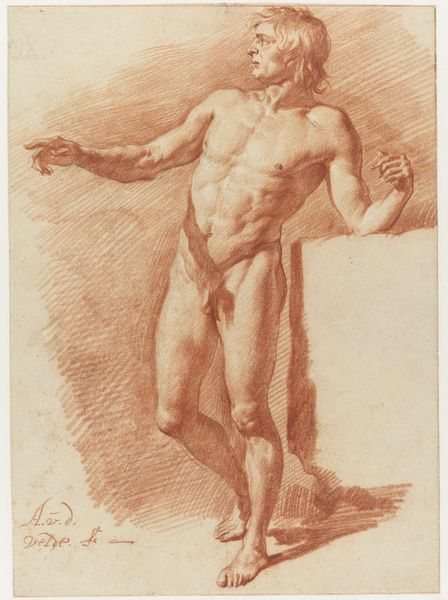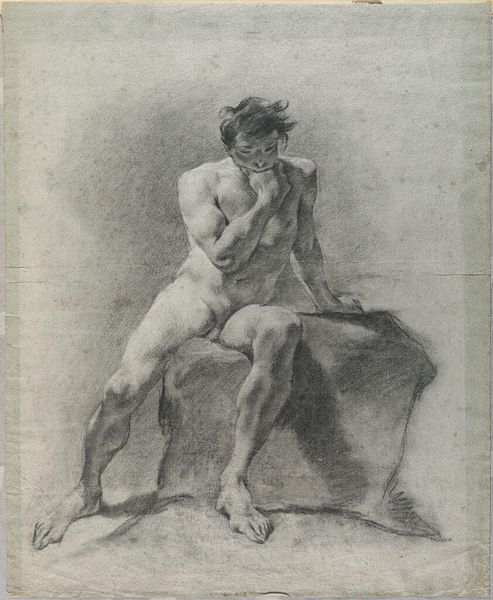
drawing, pencil
#
portrait
#
pencil drawn
#
drawing
#
figuration
#
pencil drawing
#
pencil
#
portrait drawing
#
history-painting
#
academic-art
#
nude
Copyright: Public Domain: Artvee
Editor: This is Charles-Joseph Natoire's "Académie d’homme nu assis," created in 1749. It’s a pencil drawing, and what strikes me is the powerful pose of the figure – there's an almost assertive energy to the composition. What elements of its construction stand out to you? Curator: Formally, the tension lies in the contrast between the meticulous rendering of the musculature and the relatively loose handling of the background. Observe how Natoire employs hatching and cross-hatching to define volume, creating a dynamic play of light and shadow. Do you perceive any dissonance in these contrasting treatments? Editor: I do see that, yes. The figure is so carefully rendered, especially the torso, versus the very sketch-like quality of the background. Is that contrast a technique with a specific purpose? Curator: Indeed. This purposeful contrast draws our gaze towards the figure, the body becomes the central motif, imbued with sculptural presence. It’s a demonstration of draughtsmanship but also of intellectual hierarchy – the human form elevated above its environment. Consider the lines: how do they function to create depth, texture, and ultimately, meaning? Editor: The use of line, particularly around the limbs, emphasizes the strain and strength, but it's softened by the overall tonality of the pencil. There's a real sense of movement despite the stillness of the pose. I'm curious, how might this kind of academic study relate to Natoire’s larger artistic goals? Curator: It seems clear that mastering form and anatomy, a core element of Academic art, underpins Natoire's grander decorative schemes and history paintings. We observe the dedication to rigorous formal study in pursuit of aesthetic ideals. These formal exercises served as the building blocks for larger compositions and a means to communicate complex narratives. The wreath crowning his head seems the only concession towards the kind of mythological painting Natoire would later create. Editor: So it is less a portrait and more a study in form. I hadn’t quite considered how preparatory such a drawing might be. Thanks for drawing my attention to the contrasting forms and considering how those choices point to the artistic intention and hierarchy. Curator: Indeed. And examining those fundamental components can offer insights far beyond the representational level.
Comments
No comments
Be the first to comment and join the conversation on the ultimate creative platform.
